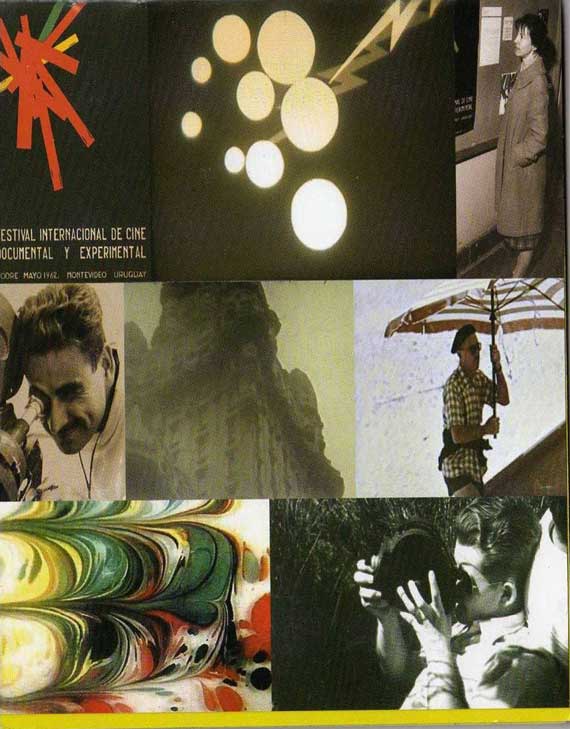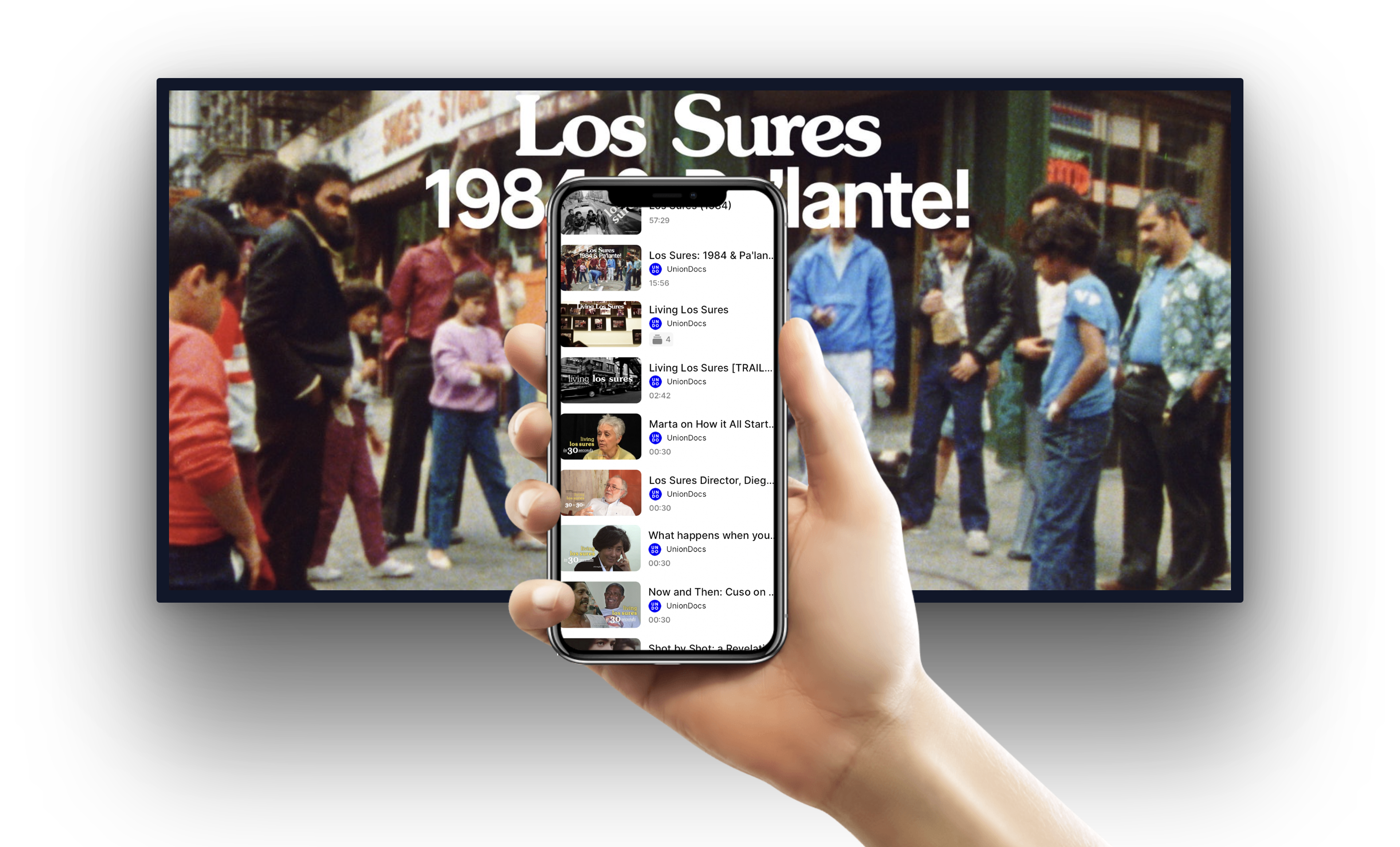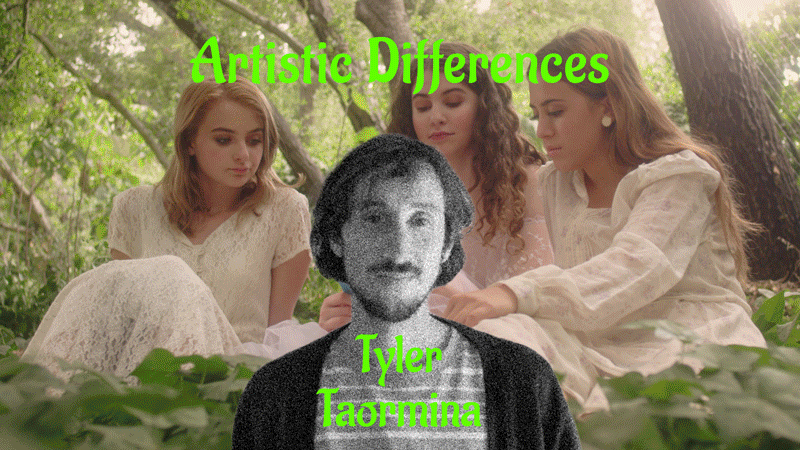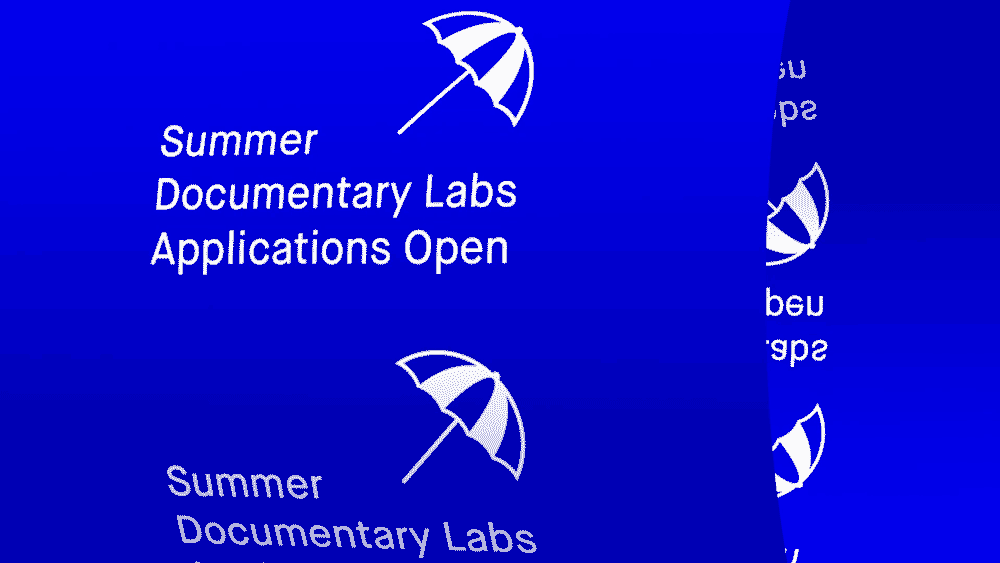
Uruguayan visual artist, film historian, and curator Angela Lòpez Ruiz presents “Archeology of the Image”, a review of the history of Uruguayan cinema between the 20s and the 70s. Ruiz’s research makes connections between cinema and other artistic disciplines during the modern age, and how these “blank pages” have had their effect on contemporary thinking. The evenings program will be divided into two parts showcasing Uruguayan experimental cinema; the first looking at historical films and the second contemporary pieces. Following this will be a panel discussion with Lòpez Ruiz, Bill Brand, and Mark Street.
Lòpez Ruiz will also present the 1958 short Color by Lidia García Millán as part of the Orphan Film Symposium‘s closing program on Saturday evening, April 10: Around the World Time Travel Diary (1897 – 2010).
This program is presented with CINEMA TROPICAL.
Historical Uruguayan Experimental Cinema
A selection of prizewinning Uruguayan films at the Festival de Cine Experimental y Documental (Festival of Experimental and Documentary Cinema) organized by CineArte SODRE between the 1950s and the 1970s. It is part of a research project called “Archaeology of Image”, which has its origins in the almost complete loss of the archives of CINEARTE in the fire that took place in the 70s. This fire was a watershed in local film production, since the dictatorship severed the spaces generated by the said festival, thus bringing this unique experience to an end, an experience that subverted the hegemonic values of commercial cinema and turned Montevideo into a ground-breaking city.
“18 de Julio” –Lidia García Millán-1951- 4 minutes-black and white-mute. Restored copy of original 16mm. This film was the First Prize in the first competition organized by Cine Universitario, artistic documentary about the principal avenue of the city filmed in 16mm developed with hand-crafted techniques .
“Cariri” – Miguel Castro-1953-3 minutes-black and white-mute.
The camera films the shifting landscape from a train in motion, then begins to descend, showing the moving rails. Guitar music starts to
play. Later the film alternates between different takes of the rails,sleepers and land, which move past from different angles within squares
“Images” – Miguel Castro- 1955- 4 minutes-black and white-mute
A romantic tale narrated on still photographs.
.“Color” – Lidia García Millán-1955- 4 mins –color
The first color experimental film on Uruguay. The music was improvisated by the Hot Jazz Club of Montevideo on a filmproyection of the film.
“Elíptica” – Carlos Bayarrés and Horacio Ferreira-1962- 3 mins –animation, black and white on the restored copy.
Animation Experimental film aesthetically influenced by Norman McLaren.
“La ciudad de la playa” – Ferruccio Mussitelli-1961- 18 mins,
Artistic documentary awarded a prize by the Ministry of Tourism. Karlovy Vary Festival prize winner.
RUNNING:25 mins (approach) All the films will be screened from digital copies.
Contemporary Uruguayan Experimental Cinema
This portion connects contemporary film production with historical production. Its aim is to reveal their common factor, the emphasis on the “poetic image”. These films are a proof of the results arising from a particular conception of the moving image, where the micro is amplified by the light crossing the image, and by using a local dialect, engages in dialogue with global cinema. The filmmakers use film as a basis for their cinematic discourse, regardless of the ultimate formats their images adopt during exhibition.
Back Home-Federico Veiroj.2001 7 minutes
Four men cruise around the street of Montevideo trying to find their way home. Experimental Film awarded on the International Festival of Uruguay.
RainMontevideo-Teresa Puppo,2009 1,45 minutes 16mm
Self-referential film based on the evolution of the space around us.
Aai 956-Guillermo Zabaleta,2009 1,10 minutes,35mm
A found footage version of “Gran Torino”. Awarded by “Fotograma09”.
Popping Eyes-Maximiliano Contenti,2008 3 minutes,black and white,-16mm hand crafted development.
“Waking up to the morning light, drinking morning tea, making morning time stop, and popping eyes”
A girl is waking up in her apartment on the city town.Her reflexive mood is described on the cloudy landscape,until she took the tea her interior time stopped the other time.
Elegbé-Guillermo Zabaleta,2008. 3 minutes, black and white, mute – 16 mm hand crafted development
This short has the frame references of a rite of African root (Exú,African deity come to America with the slaves yorubas). The film plays with the look of the elements that integrate this ritual, the gunpowder, the simbology, the combustion, the visions that it provokes, the autorreferencial experience of it.
Ground for Divorce I-Jessie Young , 2007. 1,45 minutes, 16mm
A ten year old girl all dressed up in uniform is wandering by the fields of her school when she runs into a giant chewing gum. After a while she can’t resist the temptations of the unknown wonderful object and she takes a bite…
Ground for Divorce II-Jessie Young, 2008 1,45 minutes, 16mm
Three guys are sitting in a couch staring at nothing. The chewing gum goes from one person to the other like something that empowers them. The juice from each bite increases the dripping from there faces…
RUNNING:25 mins (approach) All the films will be screened from digital copies.
This program was made possible with the generous support of Fundaciòn de Arte Contemporaneo and the National Image Archive -SODRE-.















